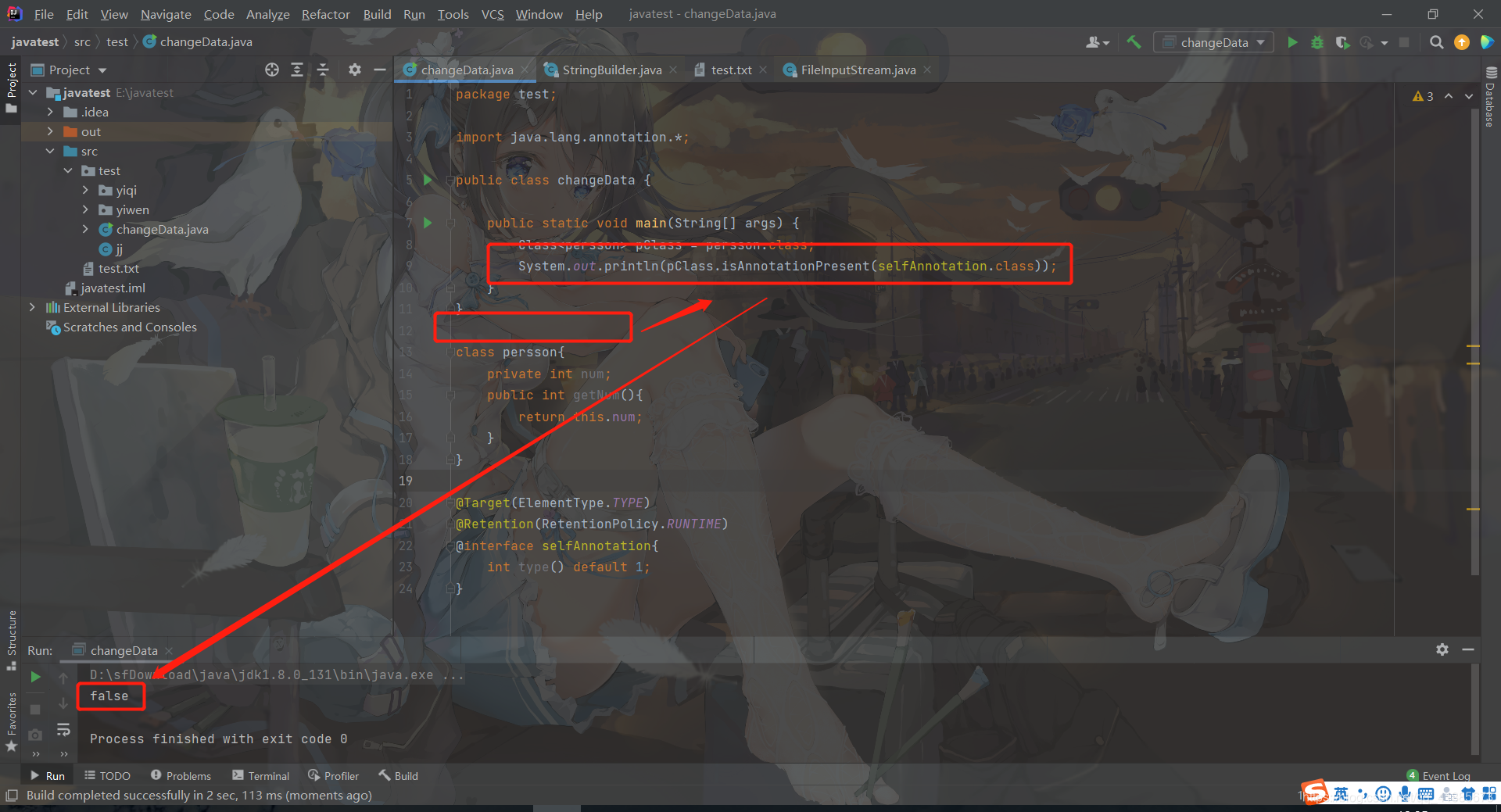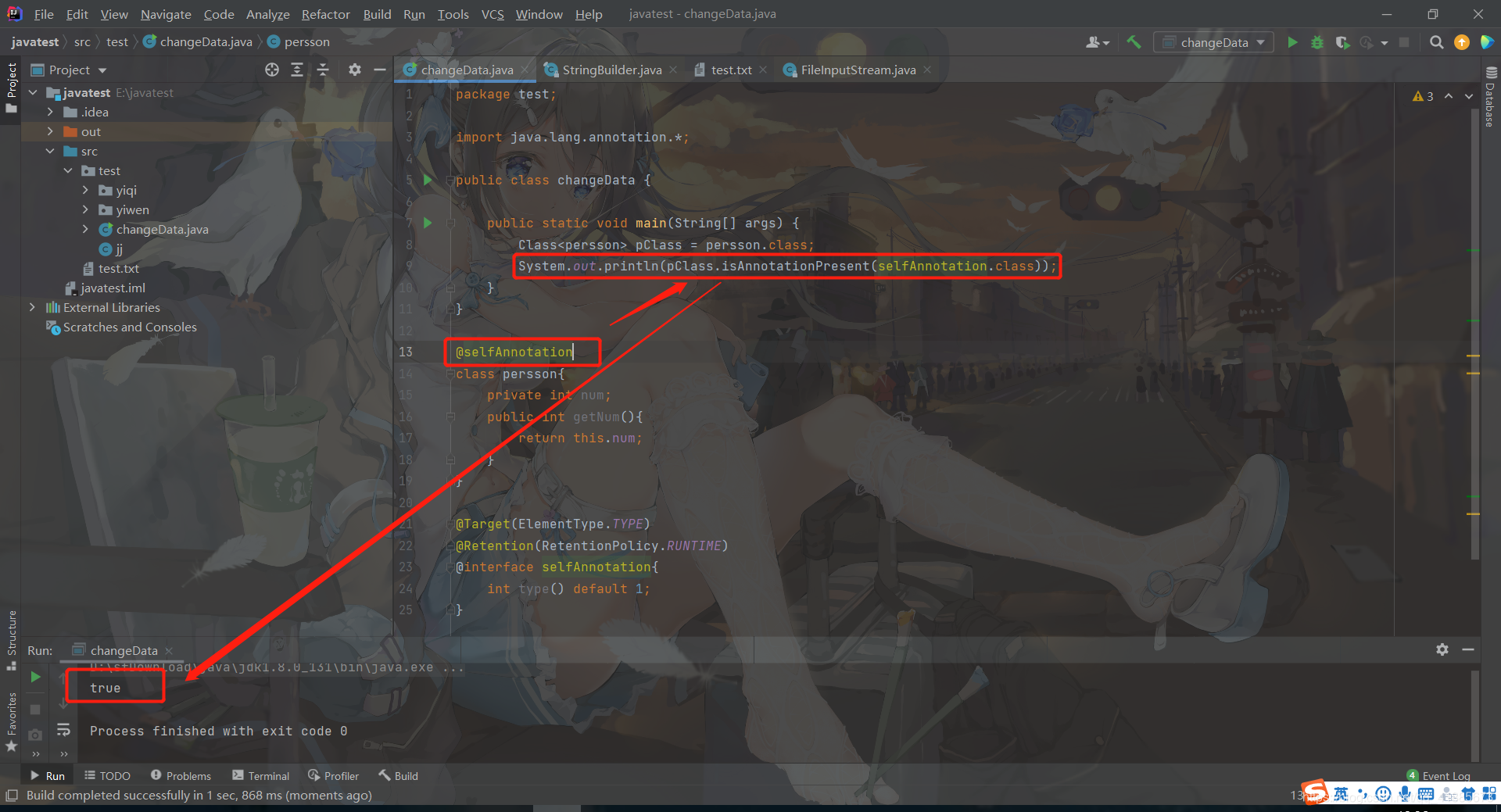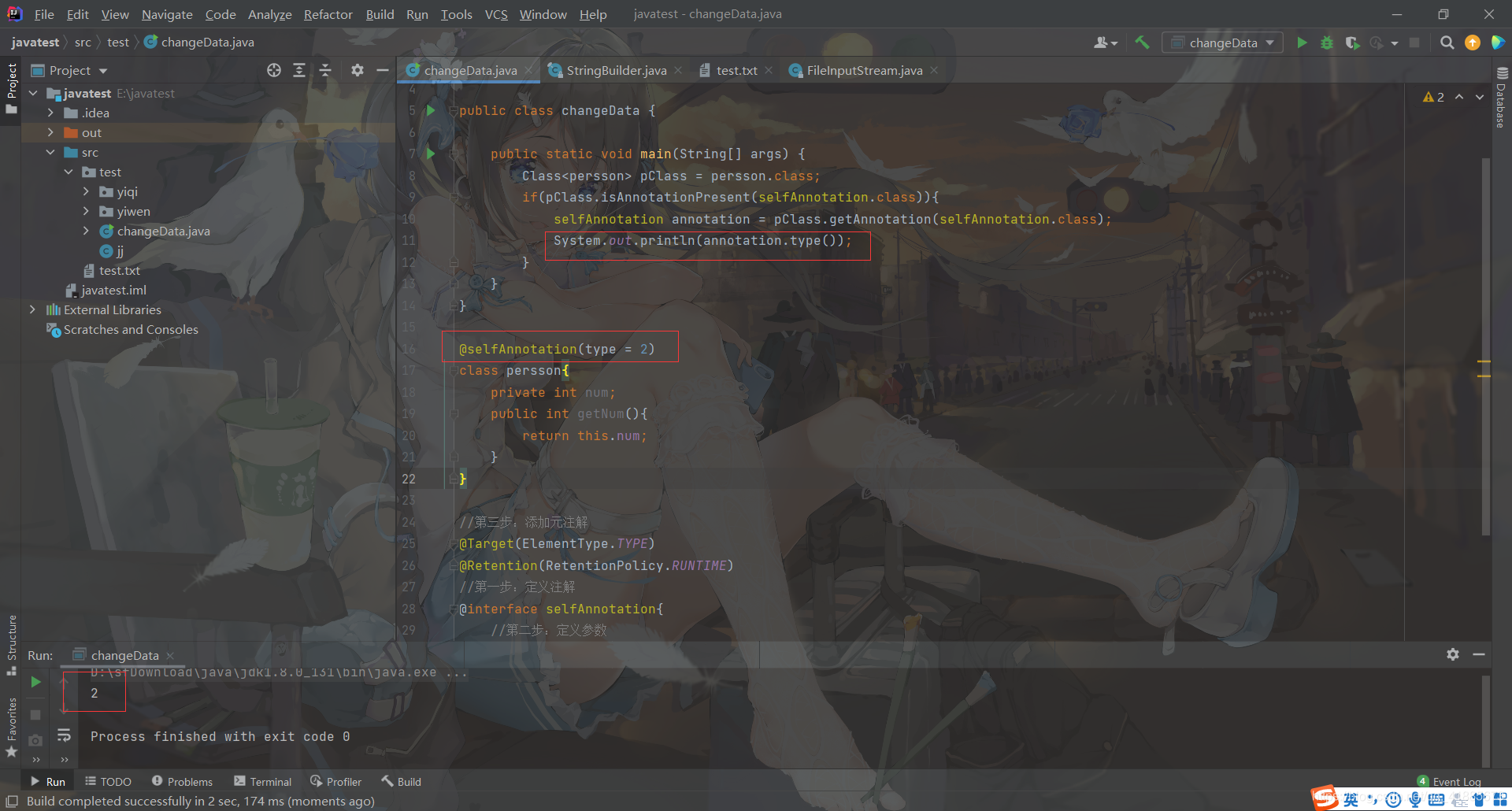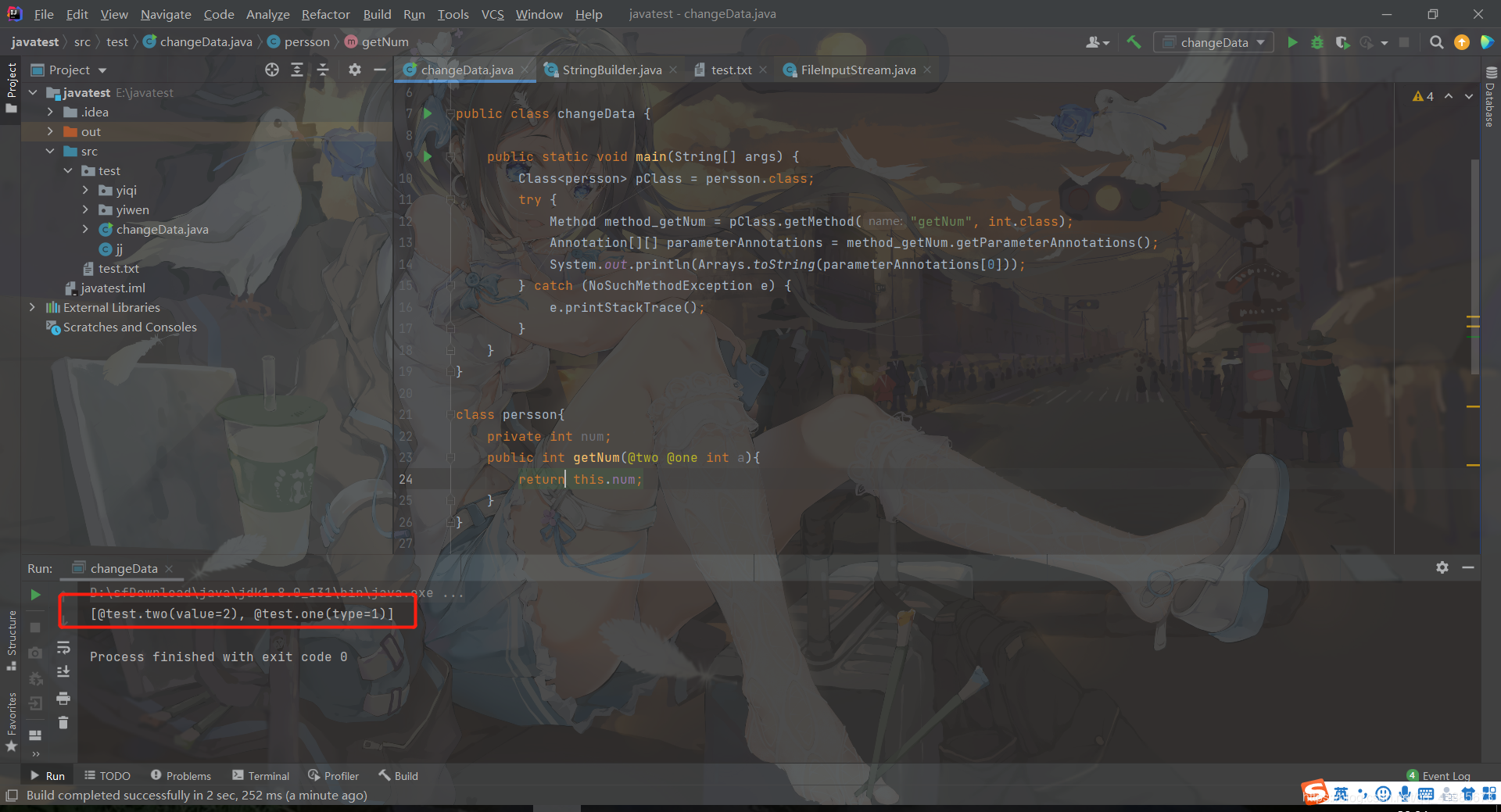java 教程——注解,Java 程序员校招蚂蚁金服
}
}
@selfAnnotation
class persson{
private int num;
public int getNum(){
return this.num;
}
}
//第三步:添加元注解
@Target(ElementType.TYPE)
@Retention(RetentionPolicy.RUNTIME)
//第一步:定义注解
@interface selfAnnotation{
//第二步:定义参数
int type() default 1;
}


二、使用反射 API 读取 Annotation:
Class.getAnnotation(Class)
Field.getAnnotation(Class)
Method.getAnnotation(Class)
Constructor.getAnnotation(Class)
package test;
import java.lang.annotation.*;
public class changeData {
public static void main(String[] args) {
Class<persson> pClass = persson.class;
if(pClass.isAnnotationPresent(selfAnnotation.class)){
selfAnnotation annotation = pClass.getAnnotation(selfAnnotation.class);
System.out.println(annotation.type());
}
}
}
@selfAnnotation(type = 2)
class persson{
private int num;
public int getNum(){
return this.num;
}
}
//第三步:添加元注解
@Target(ElementType.TYPE)
@Retention(RetentionPolicy.RUNTIME)
//第一步:定义注解
@interface selfAnnotation{
//第二步:定义参数
int type() default 1;
}

三、读取方法参数的注解
我们都知道,一个函数的参数可以是多个,而一个参数的注解也可以是多个,所以,我们获取到的 参数的注解是一个二维数组,即第几个参数的第几个注解
package test;
import java.lang.annotation.*;
import java.lang.reflect.Method;
import java.util.Arrays;
public class changeData {
public static void main(String[] args) {
Class<persson> pClass
= persson.class;
try {
Method method_getNum = pClass.getMethod("getNum", int.class);
Annotation[][] parameterAnnotations = method_getNum.getParameterAnnotations();
System.out.println(Arrays.toString(parameterAnnotations[0]));
} catch (NoSuchMethodException e) {
e.printStackTrace();
}
}
}
class persson{
private int num;
public int getNum(@two @one int a){
return this.num;
}
}
@Retention(RetentionPolicy.RUNTIME)
@Target(ElementType.PARAMETER)
@interface one{
int type() default 1;
}
@Retention(RetentionPolicy.RUNTIME)
@Target(ElementType.PARAMETER)
@interface two{
int value() default 2;
}

四、使用注解
注解如何使用,完全由程序自己决定。例如,JUnit 是一个测试框架,它会自动运行所有标记为@Test的方法。
我们来看一个@Range注解,我们希望用它来定义一个String字段的规则:字段长度满足@Range的参数定义:












评论